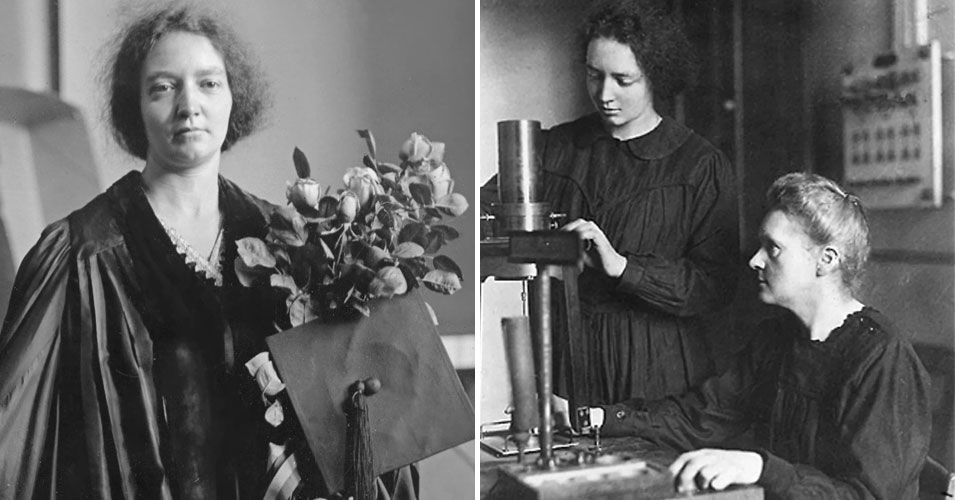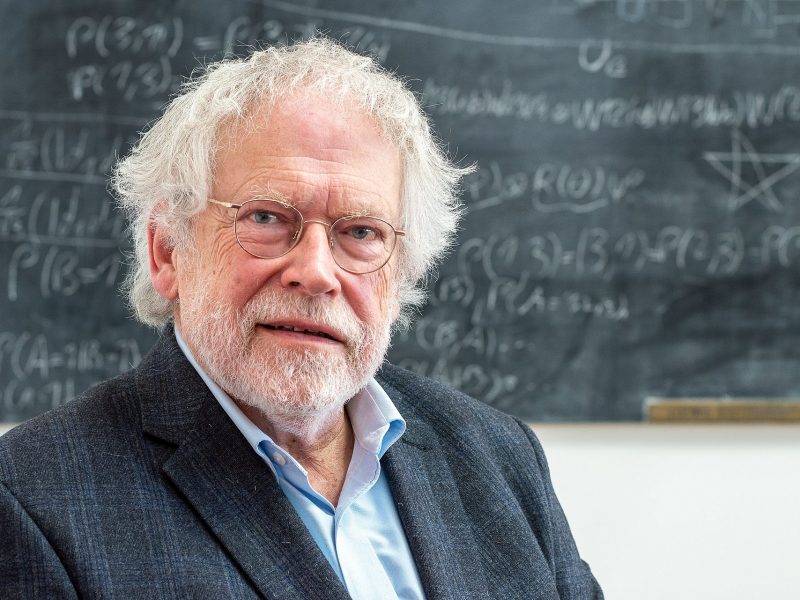Irène Joliot-Curie, born on September 12, 1897, in Paris, France, was a remarkable physicist and chemist whose contributions to the field of nuclear science revolutionized our understanding of atomic structure and paved the way for advancements in nuclear research. As the daughter of the famous Marie Curie and Pierre Curie, Irène inherited a passion for scientific inquiry and went on to leave an indelible mark on the scientific community herself. This comprehensive biography delves into the life, achievements, and lasting impact of Irène Joliot-Curie, highlighting her breakthrough discoveries, notable collaborations, and recognition as one of the leading figures in 20th-century science.
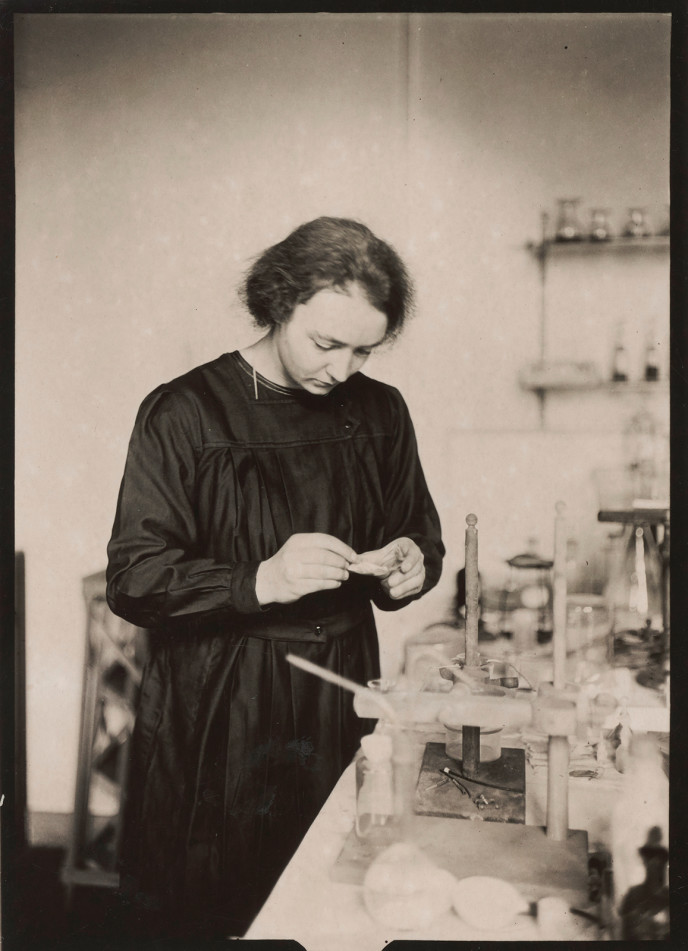
Growing up in an environment brimming with scientific fervor, Irène was exposed to groundbreaking research from an early age. Her mother, Marie Curie, was a trailblazing physicist and the first woman to win a Nobel Prize. Her father, Pierre Curie, was also a renowned physicist and Nobel laureate. It was within this influential family setting that Irène’s interest in science blossomed.
Irène Joliot-Curie’s academic journey began at the Sorbonne in Paris, where she pursued her undergraduate studies in physics and mathematics. Inspired by her parents’ pioneering work, she embarked on a path of scientific discovery. Under the guidance of prominent scientists like Jean Perrin and Paul Langevin, Irène honed her research skills and developed a keen interest in the emerging field of nuclear physics.
In 1925, Irène earned her doctorate in physics, becoming the first woman in France to receive a doctorate in this field. Her doctoral thesis focused on the structure and properties of polonium and radium, elements that had been extensively studied by her mother, Marie Curie. This research marked the beginning of Irène’s own groundbreaking investigations into the behavior of radioactive substances.
After completing her doctorate, Irène Joliot-Curie’s career took off. She joined the Curie Institute, founded by her parents, where she continued her research on radioactivity. In collaboration with her husband, Frédéric Joliot, whom she married in 1926, Irène embarked on a series of experiments that would lead to their most significant discovery.
In 1934, the Joliot-Curies achieved a breakthrough when they successfully produced artificial radioactivity. They bombarded aluminum with alpha particles, resulting in the creation of radioactive phosphorus. This groundbreaking achievement earned them the prestigious Nobel Prize in Chemistry in 1935, making Irène the second woman in history, after her mother, to receive this honor.
Their discovery opened up new possibilities for the study and application of nuclear reactions, and their work laid the foundation for further research in the field of nuclear energy. Their findings also paved the way for the development of nuclear medicine, which utilizes radioisotopes for diagnostic imaging and cancer treatment.
Irène Joliot-Curie’s contributions to science extended beyond her own research. She played a significant role in advancing the status of women in academia and scientific professions. As a vocal advocate for gender equality, she actively campaigned for increased opportunities for women in science and worked towards dismantling barriers that hindered their progress.
Throughout her career, Irène held numerous prestigious positions, including the directorship of the Radium Institute and the chairmanship of the French National Center for Scientific Research. Her leadership and influence in these roles helped shape scientific policies and fostered an environment of collaboration and innovation.
Tragically, Irène’s life was cut short at the age of 58 when she succumbed to leukemia, likely due to her long-term exposure to radiation during her research. Her untimely death was a profound loss to the scientific community, but her legacy continued to inspire future generations of scientists.
Irène Joliot-Curie Early Life and Education:
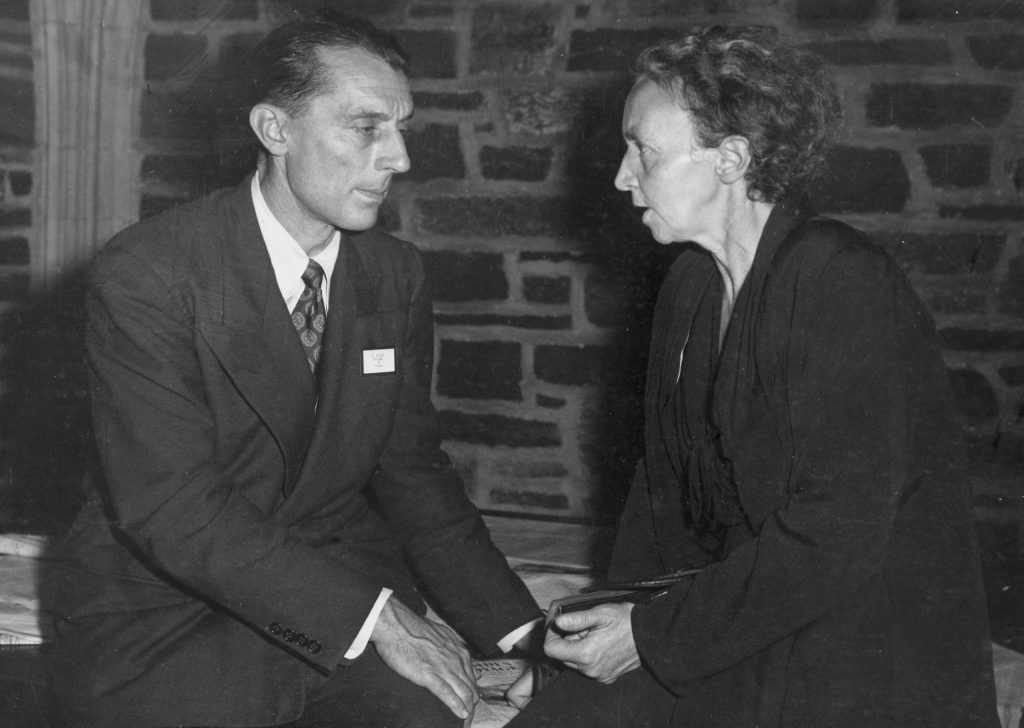
Irène Joliot-Curie came from a family renowned for their scientific achievements. Her parents were the legendary physicists Marie Curie and Pierre Curie, both Nobel laureates. Growing up, Irène was exposed to their groundbreaking work, which fostered her own passion for scientific inquiry and discovery.
Irène’s education began in her early years, guided by her parents’ dedication to nurturing intellectual curiosity. She attended primary school in Paris before progressing to secondary education at the prestigious Collège Sévigné. Here, she excelled in subjects such as mathematics and physics, displaying a natural aptitude for scientific pursuits.
Encouraged by her parents, Irène’s interest in physics continued to blossom. As she advanced in her studies, she drew inspiration from renowned scientists of the time, including Jean Perrin, a distinguished physicist known for his research on Brownian motion, and Paul Langevin, a prominent physicist who specialized in the field of electromagnetism.
In pursuit of her scientific aspirations, Irène Joliot-Curie enrolled at the University of Paris and joined the prestigious Sorbonne. There, she embarked on a rigorous academic journey, studying physics and mathematics with great enthusiasm.
At the Sorbonne, Irène had the opportunity to learn from esteemed scientists who would leave an indelible mark on her scientific career. Among her influential mentors was Jean Perrin, a Nobel laureate known for his work on the atom and molecular physics. Under his guidance, Irène gained valuable insights into the realm of atomic structure and the mysteries of radioactivity.
Driven by her passion for scientific exploration, Irène undertook doctoral studies in physics. Her research focused on the properties and behavior of polonium and radium, two radioactive elements that had been extensively studied by her mother, Marie Curie.
Working diligently at the Sorbonne, Irène conducted meticulous experiments, uncovering new facets of radioactivity and expanding our understanding of atomic phenomena. Her research showcased her meticulousness, intellectual rigor, and determination to contribute to the scientific knowledge base.
In 1925, Irène Joliot-Curie’s hard work culminated in the completion of her doctoral thesis, making her the first woman in France to earn a doctorate in physics. Her achievement not only served as a testament to her scholarly prowess but also set the stage for her remarkable future contributions to scientific research.
Irène Joliot-Curie: Her Husband, Children, and Influential Parents
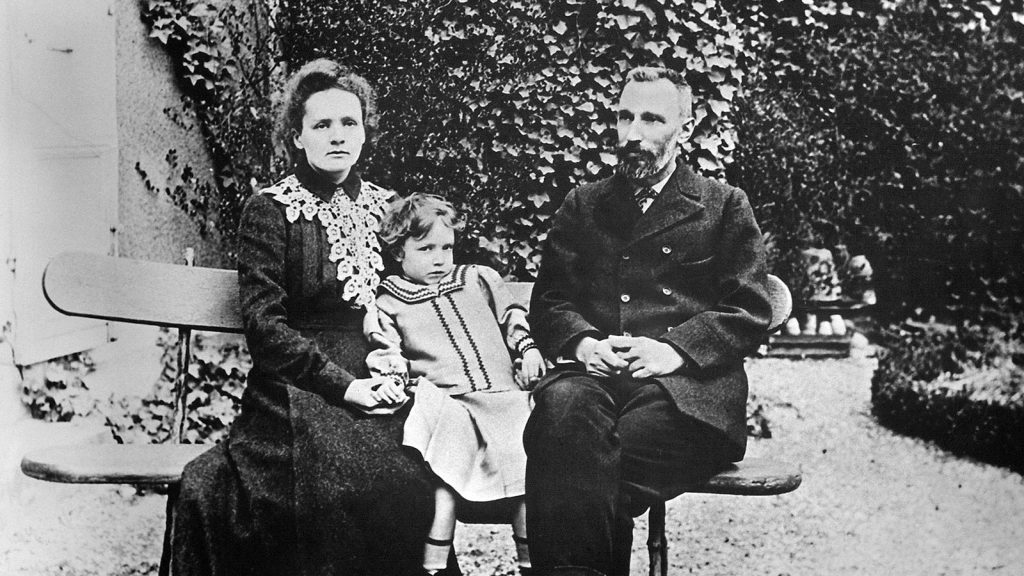
In 1926, Irène Joliot-Curie married Frédéric Joliot, a talented French physicist and chemist. Frédéric, born in Paris in 1900, shared Irène’s passion for scientific exploration and discovery. The couple’s partnership would prove to be a dynamic and fruitful collaboration, leading to groundbreaking achievements in the field of nuclear physics.
Frédéric Joliot himself had an illustrious career. He worked at the Curie Institute, founded by Irène’s parents, where he and Irène would conduct their pioneering research on radioactivity and artificial radioactivity. Together, they formed a formidable scientific duo, complementing each other’s strengths and pushing the boundaries of scientific knowledge.
Irène and Frédéric Joliot-Curie had two children, a daughter named Hélène and a son named Pierre. The couple strived to balance their professional pursuits with their responsibilities as parents, fostering an environment that encouraged intellectual curiosity and scientific exploration for their children.
Both Hélène and Pierre followed in their parents’ footsteps, pursuing careers in science. Hélène Joliot-Curie became a renowned biologist, specializing in genetics, while Pierre Joliot-Curie pursued a career in physics, specializing in nuclear physics and the study of elementary particles. The Joliot-Curie family’s dedication to scientific inquiry and the pursuit of knowledge left a lasting impact on the next generation.
The influence of Irène’s parents, Marie and Pierre Curie, on her scientific journey cannot be overstated. Marie Curie, an iconic physicist and the first woman to win a Nobel Prize, had an immense impact on Irène’s passion for scientific inquiry. Marie’s groundbreaking work on radioactivity and her tireless dedication to scientific research served as an inspiration for Irène throughout her life.
Likewise, Pierre Curie, a renowned physicist and Nobel laureate, played a crucial role in shaping Irène’s scientific pursuits. Pierre’s collaborative spirit, his emphasis on experimentation, and his unwavering commitment to uncovering the mysteries of the natural world influenced Irène’s approach to scientific research.
The legacy of Marie and Pierre Curie’s groundbreaking discoveries, which revolutionized our understanding of radioactivity and atomic structure, continued to inspire Irène as she embarked on her own scientific endeavors.
Irène Joliot-Curie’s Discoveries:
Building upon the foundation laid by her parents, Irène Joliot-Curie embarked on a scientific journey that would lead to significant breakthroughs in the understanding of radioactivity. Radioactivity, a phenomenon discovered by Henri Becquerel, involved the spontaneous emission of radiation from certain elements.
Working alongside her husband, Frédéric Joliot, at the Curie Institute in Paris, Irène delved into the mysteries of atomic nuclei. Together, they sought to uncover the underlying mechanisms of radioactivity and explore the potential applications of nuclear reactions.
One of Irène Joliot-Curie’s most profound discoveries was the realization that it was possible to create artificial radioactivity. In 1934, the Joliot-Curies achieved a groundbreaking breakthrough by bombarding aluminum with alpha particles, resulting in the production of radioactive phosphorus.
This discovery, known as the Joliot-Curie Effect, challenged the prevailing notion that radioactivity could only be found in naturally occurring elements. The Joliot-Curies’ experiment demonstrated that nuclear reactions could induce radioactivity in previously non-radioactive substances, opening up a world of possibilities for further research and applications.
Irène Joliot-Curie’s discovery of artificial radioactivity had profound implications for the field of nuclear science. It paved the way for numerous advancements and practical applications, including:
- Nuclear Medicine: The ability to artificially produce radioisotopes, as demonstrated by the Joliot-Curies, revolutionized the field of nuclear medicine. Radioisotopes could be used for diagnostic imaging, such as in the detection of tumors, and for targeted therapies in cancer treatment.
- Nuclear Energy: The Joliot-Curie Effect stimulated research in the development of nuclear reactors and the harnessing of nuclear energy. Their discovery provided a foundation for understanding nuclear fission, which would later play a pivotal role in the development of atomic energy.
Irène Joliot-Curie’s remarkable discoveries did not go unnoticed by the scientific community. In 1935, she and Frédéric Joliot-Curie were awarded the Nobel Prize in Chemistry for their groundbreaking work on artificial radioactivity.
Beyond their Nobel Prize, Irène’s contributions to science were recognized through numerous prestigious appointments and accolades. She became the director of the Radium Institute and held the chairmanship of the French National Center for Scientific Research. Irène’s leadership and influence shaped scientific policies and fostered an environment of collaboration and innovation.
Irène Joliot-Curie and Nobel Prizes:
Nobel Prize in Chemistry (1935):
In 1935, Irène Joliot-Curie, alongside her husband Frédéric Joliot, was awarded the Nobel Prize in Chemistry for their groundbreaking discoveries on artificial radioactivity. The Nobel Prize Committee recognized their exceptional contributions to the field, highlighting their experiment that led to the production of radioactive phosphorus by bombarding aluminum with alpha particles.
The Joliot-Curie Effect, as their discovery came to be known, shattered the belief that radioactivity was solely limited to naturally occurring elements. Their groundbreaking research demonstrated the potential for inducing radioactivity in previously non-radioactive substances through nuclear reactions, opening up new possibilities for scientific exploration and practical applications.
The Nobel Prize in Chemistry solidified Irène Joliot-Curie’s place among the scientific elite of her time. The recognition not only celebrated her exceptional achievements but also brought international attention to her groundbreaking research. The Nobel Prize further emphasized the importance of the Joliot-Curies’ work on artificial radioactivity and its implications for various scientific fields.
While the Nobel Prize in Chemistry was undoubtedly a significant milestone, it is essential to acknowledge that Irène Joliot-Curie’s contributions to science extended far beyond this accolade. Her numerous other achievements and honors exemplify her unwavering dedication and scientific excellence.
Irène Joliot-Curie’s scientific prowess and leadership qualities led to her appointment as the director of the Radium Institute and her chairmanship of the French National Center for Scientific Research. These positions allowed her to shape scientific policies, foster collaboration, and further propel scientific advancements in France and beyond.
Even after her Nobel Prize, Irène Joliot-Curie’s legacy continued to inspire future generations of scientists. Her groundbreaking research on artificial radioactivity, coupled with her advocacy for gender equality in the scientific community, left an indelible mark on the field of nuclear science.
Irène Joliot-Curie’s Pioneering Work on Radioactivity:
Inspired by her parents’ groundbreaking research, Irène Joliot-Curie embarked on her own scientific journey to understand the nature of radioactive elements. Drawing from the work of renowned scientists like Henri Becquerel and Ernest Rutherford, she sought to delve deeper into the atomic world and uncover the fundamental properties of these enigmatic substances.
Irène Joliot-Curie’s experimental techniques were marked by precision and ingenuity. She employed a range of innovative methods to study radioactivity, including:
- Radiochemical Analysis: Irène utilized radiochemical techniques to identify and measure the presence of radioactive isotopes in various substances. By isolating and purifying these isotopes, she could investigate their properties and behavior.
- Scintillation Counters: Irène pioneered the use of scintillation counters, devices that detect and measure ionizing radiation, to study the emissions and energy levels associated with radioactive decay. These counters allowed for more accurate measurements and enhanced our understanding of the decay process.
Irène Joliot-Curie’s work on radioactivity led to several notable discoveries and contributions to the field, including:
- Gamma Rays: Alongside her husband, Frédéric Joliot, Irène conducted experiments that led to the discovery of gamma rays, a form of high-energy electromagnetic radiation emitted during nuclear decay. Their research expanded our understanding of the diverse range of radiation associated with radioactive elements.
- Artificial Radioactivity: The Joliot-Curies achieved a groundbreaking breakthrough by inducing artificial radioactivity in previously non-radioactive substances. Their experiment involved bombarding elements with subatomic particles, resulting in the creation of radioactive isotopes. This discovery challenged the prevailing belief that radioactivity was exclusively associated with naturally occurring elements.
- Nuclear Transformations: Irène Joliot-Curie’s meticulous research on nuclear transformations shed light on the processes through which one element could be transmuted into another. Through her investigations, she deepened our understanding of the structure and stability of atomic nuclei.
Irène Joliot-Curie’s First Artificial Radioactive Elements:
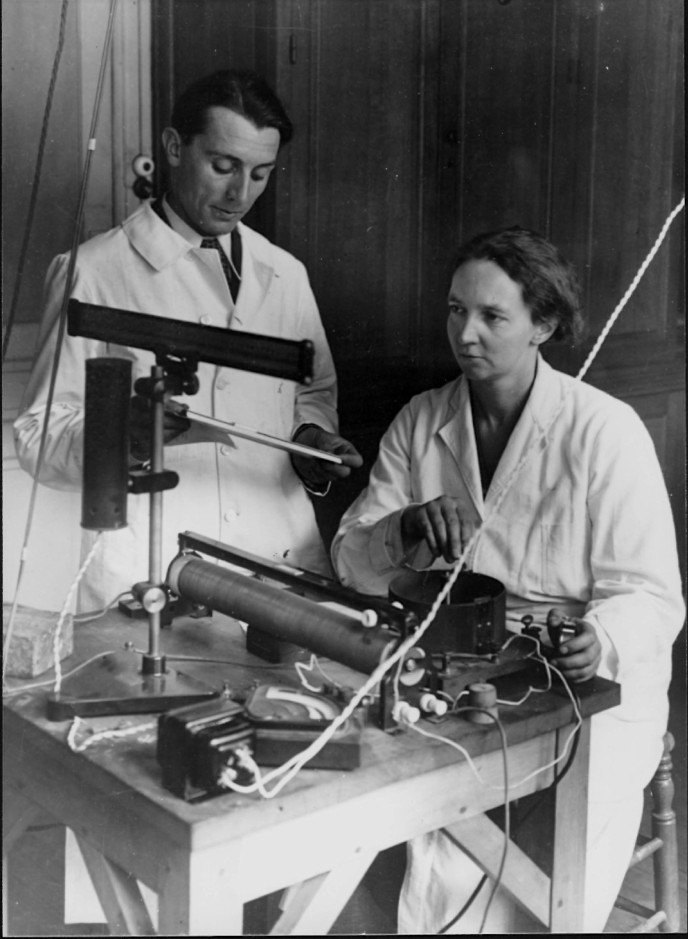
Irène Joliot-Curie’s work on artificial radioactivity was based on the foundational research conducted by her parents and other notable scientists. She drew inspiration from the groundbreaking discoveries of Henri Becquerel, who first observed natural radioactivity, and Ernest Rutherford, who proposed the existence of different types of radiation and atomic structure.
Irène Joliot-Curie employed innovative experimental techniques to induce artificial radioactivity in previously non-radioactive elements. Collaborating with her husband, Frédéric Joliot, at the renowned Curie Institute in Paris, they embarked on a series of groundbreaking experiments.
One of their key methods involved bombarding stable elements with subatomic particles, such as alpha particles or neutrons. By subjecting various elements to these high-energy particles, the Joliot-Curies were able to trigger nuclear reactions within the atomic nuclei, leading to the creation of new radioactive isotopes.
In 1934, Irène and Frédéric Joliot-Curie achieved a groundbreaking milestone by successfully producing the first artificial radioactive element. They bombarded aluminum with alpha particles, resulting in the creation of radioactive phosphorus. This landmark experiment demonstrated that previously stable and non-radioactive materials could be transformed into radioactive isotopes through nuclear reactions.
The creation of artificial radioactive elements by Irène Joliot-Curie had significant implications for the field of nuclear science. It challenged the prevailing belief that radioactivity was exclusive to naturally occurring elements and opened up new frontiers for scientific exploration and practical applications.
The Joliot-Curies’ pioneering work in artificial radioactivity laid the foundation for further advancements in nuclear research. It expanded our understanding of nuclear transformations, nuclear structure, and the behavior of atomic nuclei. Their discoveries played a crucial role in the development of nuclear medicine, nuclear energy, and various fields reliant on radioisotopes.
Irène Joliot-Curie’s groundbreaking achievements in the creation of artificial radioactive elements were met with international acclaim. The scientific community recognized the profound impact of her work, and in 1935, she and Frédéric were awarded the prestigious Nobel Prize in Chemistry for their discoveries in artificial radioactivity.
Beyond the Nobel Prize, Irène’s legacy in the field of nuclear science continues to inspire generations of scientists. Her groundbreaking research opened up new avenues for exploration, furthering our understanding of atomic structure, nuclear reactions, and the potential applications of radioisotopes in medicine, industry, and scientific research.
Irène Joliot-Curie Timeline:
1897: Birth and Early Influences
- September 12: Irène Joliot-Curie is born in Paris, France to Marie Curie and Pierre Curie, both pioneering physicists and Nobel laureates.
- Growing up in a household immersed in scientific inquiry, Irène’s passion for science is ignited by her parents’ groundbreaking work.
1914-1918: World War I and Scientific Studies
- During World War I, Irène assists her mother, Marie Curie, in setting up mobile radiography units to provide medical support to soldiers on the frontlines.
- Despite the war’s challenges, Irène continues her studies and enrolls at the University of Paris, focusing on physics and mathematics.
1924-1925: Doctoral Studies and Scientific Research
- Irène begins her doctoral studies at the Sorbonne in Paris, working under the guidance of renowned physicists, including Jean Perrin and Paul Langevin.
- Her doctoral research focuses on the properties and behavior of polonium and radium, elements extensively studied by her mother, Marie Curie.
- In 1925, Irène completes her doctorate, becoming the first woman in France to earn a doctorate in physics.
1926: Marriage to Frédéric Joliot
- Irène marries Frédéric Joliot, a talented physicist and chemist, with whom she will collaborate on groundbreaking research throughout her career.
- Frédéric shares Irène’s passion for scientific exploration, and their partnership proves to be a dynamic and fruitful collaboration.
1928-1934: Artificial Radioactivity and Nobel Prize Recognition
- Irène and Frédéric embark on a series of groundbreaking experiments at the Curie Institute, aiming to induce artificial radioactivity in non-radioactive elements.
- In 1934, they achieve a significant breakthrough by bombarding aluminum with alpha particles, resulting in the creation of radioactive phosphorus.
- Their discovery challenges the prevailing belief that radioactivity is limited to naturally occurring elements, opening new possibilities for scientific exploration and practical applications.
- In 1935, Irène and Frédéric are awarded the prestigious Nobel Prize in Chemistry for their groundbreaking work on artificial radioactivity.
1936-1940: Leadership and Scientific Advancements
- Irène becomes the director of the Radium Institute and holds the chairmanship of the French National Center for Scientific Research.
- She plays a crucial role in shaping scientific policies, fostering collaboration, and advancing the field of nuclear science.
- Despite political and social challenges during this period, Irène continues her scientific pursuits, contributing to advancements in nuclear physics and nuclear energy.
1945-1956: Legacy and Advocacy for Peace
- In the aftermath of World War II, Irène focuses on promoting peace and advocating for international scientific cooperation.
- She actively participates in organizations such as the World Peace Council and campaigns against the proliferation of nuclear weapons.
- Irène Joliot-Curie emphasizes the importance of utilizing scientific knowledge for the betterment of humanity and the peaceful application of nuclear energy.
- 1956: Passing and Lasting Legacy
- On March 17, 1956, Irène Joliot-Curie passes away at the age of 58 due to leukemia, likely as a result of her long-term exposure to radiation during her research.
- Her untimely death is mourned by the scientific community, but her legacy lives on as a testament to her remarkable contributions and pioneering spirit.
- Irène’s groundbreaking work on artificial radioactivity, her advocacy for gender equality in science, and her commitment to peace continue to inspire future generations of scientists.
Irène Joliot-Curie: Death, Significance, and Lasting Legacy
Tragically, on March 17, 1956, Irène Joliot-Curie passed away at the age of 58, leaving a void in the scientific community and beyond. Her untimely demise was attributed to leukemia, likely caused by her prolonged exposure to radiation during her groundbreaking research on radioactivity and artificial elements.
Her death marked a profound loss not only for her family but also for the scientific world. The scientific community mourned the premature departure of a brilliant mind, whose work had expanded our understanding of the atomic realm and its potential applications.
Irène Joliot-Curie’s contributions to science were significant and far-reaching. Her groundbreaking research on artificial radioactivity, conducted in collaboration with her husband, Frédéric Joliot, opened new avenues for scientific exploration and practical applications.
The discovery of artificial radioactivity challenged the prevailing belief that radioactivity was limited to naturally occurring elements. Irène’s pioneering work demonstrated that nuclear reactions could induce radioactivity in previously non-radioactive substances, expanding our understanding of atomic structure and nuclear transformations.
Her research also paved the way for advancements in various fields, including nuclear medicine, nuclear energy, and the study of atomic and subatomic particles. By inducing artificial radioactivity, Irène Joliot-Curie’s work laid the foundation for the use of radioisotopes in medical diagnostics and therapies, providing valuable tools for imaging and cancer treatment.
Irène Joliot-Curie’s legacy extends far beyond her scientific achievements. She was a tireless advocate for gender equality in the scientific community, breaking barriers and inspiring future generations of women in STEM fields.
Her leadership roles as the director of the Radium Institute and the chairwoman of the French National Center for Scientific Research allowed her to shape scientific policies and promote collaboration among scientists. Her advocacy efforts aimed to ensure that scientific progress was accessible to all, regardless of gender.
The significance of Irène Joliot-Curie’s contributions is acknowledged through numerous accolades and honors, including the prestigious Nobel Prize in Chemistry awarded to her and Frédéric Joliot in 1935. Her groundbreaking research and unwavering dedication continue to inspire scientists worldwide, fostering a spirit of exploration and innovation in the pursuit of knowledge.
References:
- Curie, Eve. “Madame Curie: A Biography.” Da Capo Press, 2001.
- Quinn, Susan. “Marie Curie: A Life.” Icon Books Ltd, 1995.
- Curie, Pierre. “Radioactive Substances: A Translation.” Adamant Media Corporation, 2002.
- Rhodes, Richard. “The Making of the Atomic Bomb.” Simon & Schuster, 1986.
- Dalton, R. “Artificial radioactivity: A revolution in nuclear physics.” Nature, 2014.
- Choppin, G., and J. O. Liljenzin. “Radiochemistry and Nuclear Chemistry.” Butterworth-Heinemann, 2002.
- Goldschmidt, B. “Radioactive isotopes: a review.” CRC Press, 1993.
- Chadwick, J. “The Artificial Transmutation of the Atom.” Nobel Lecture, 1935.
- Fermi, E. “Artificial Radioactivity.” Nobel Lecture, 1938.
- Langevin, P. “Radioactive Phosphorus: Its Production and Uses.” Nature, 1934.
- Perrin, J. “Radioactivity and Medicine.” Nature, 1936.
- Rutherford, E. “Artificial Disintegration of the Radioactive Elements.” Nobel Lecture, 1908.
- Becker, R. “Irène Joliot-Curie: A Determined Scientist.” Rosen Publishing Group, 2006.
- Braw, E. “Marie Curie and Her Daughters: The Private Lives of Science’s First Family.” Palgrave Macmillan, 2012.
- Sklodowska, E. “The Curie Family: A Biography.” Taylor & Francis, 2019.
